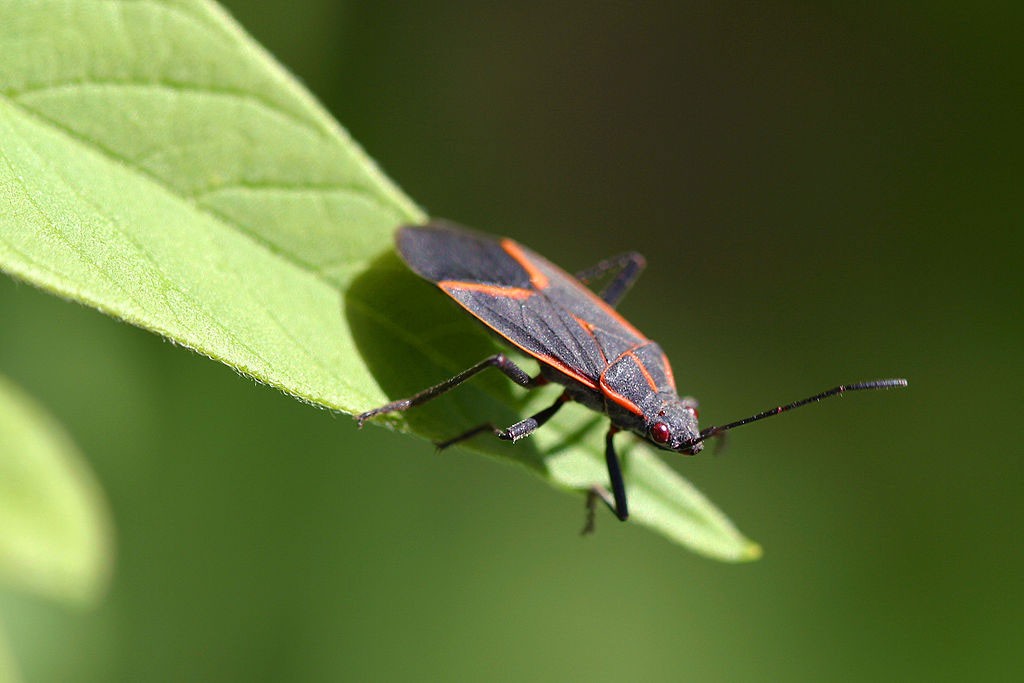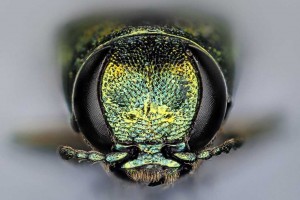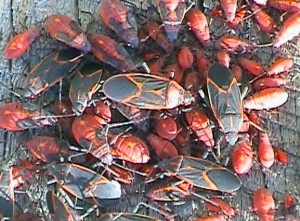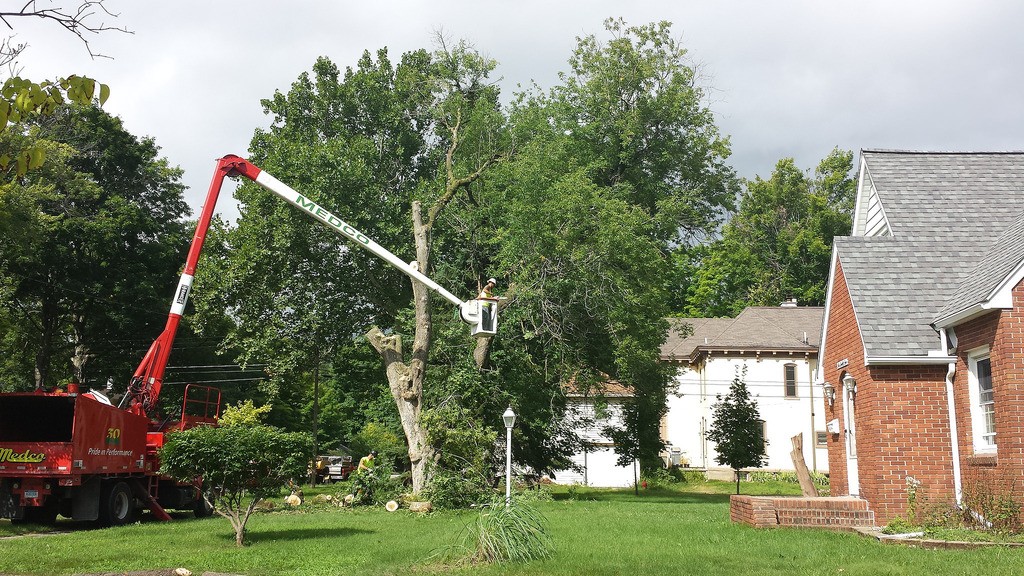Boxelder bugs: common as homegrown, annoying as invasive

Boxelder bugs will happily chow down on “real” maple trees if no boxelders are available. Photo: Tom Murphy VII, Creative Commons, some rights reserved
There is a lot of press these days about populations coming in from other countries uninvited. They tend to have very large families, and all too often end up burdening American taxpayers. However, once in a while, certain domestic groups become troublemakers as well. They gather in large numbers and mill around, apparently with nothing to do. I even hear reports of them sneaking into homes. I’m talking about insect pests, of course.
Like the Japanese beetle, European corn borer, and Asian longhorned beetle, most of the really bad actors are from away. With more than sixty invasive insect pests, New York State leads the nation in the invasive insect category (a classic example of the first being last, I suppose). Unfortunately, these are high-maintenance guests, and cost a lot to “entertain.”

Emerald ash borer in your face. This pricey import will cost us billions. Photo: Macroscopic Solutions, Creative Commons, some rights reserved
For example, before it’s through with us, the emerald ash borer will cost federal, state, and local governments billions of dollars to manage. Swede midge, leek moth, and spotted-wing drosophila, immigrants which arrived within the past ten years, have already cut into the revenues of farmers.
As mentioned, not every pest that bugs us is from overseas. The hot, dry conditions this year have allowed a hometown insect to become far too numerous for their own good. Or at least for our good. Keep an eye out this summer for boxelder bugs. These guys are oval, beetle-like jobs about a half-inch long, and primarily dark brown. What sets them apart from other insects is the red hatch markings that crisscross their backs in a sort of harlequin pattern.

Boxelder bugs enjoying reproductive success in hot, dry weather. Photo: viking6, Creative Commons, some rights reserved
As their name suggests, they prefer to feed on the sap of boxelder trees, also known as California maples, ash-leaf maples, or “those *#**# weed trees.” Boxelders are in fact maples, and can be tapped in spring if you don’t have any “real” maples around. Even if none grow in your neighborhood, you may still find boxelder bugs on your doorstep because they will feed on other species of maple if their favorite is in short supply. They are not known to cause serious damage to trees, much to the disappointment of those who despise boxelders.
Why hot dry weather seems to favor the reproductive success of boxelder bugs, I don’t know, but expect to see at least a few of these by late summer. Like the multicolored Asian lady beetle, the problem with boxelder bugs is their sheer numbers. They like to amass on south or west-facing exterior walls in the afternoon, and will find their way inside unless you have done an exceptional job caulking and weatherstripping around windows and doors.

Boxelder, a.k.a. California maple, a.k.a. (to haters) those *#**# weed trees, on its way out of a yard. Photo: anneheathen, Creative Commons, some rights reserved
Fortunately, boxelder bugs will not breed in your home, nor will they bite you, spread disease, or get into stored foods. In that respect they’re not bad. But when they fall into your morning coffee or scrambled eggs it can get on your nerves. The best line of defense is, well, a good defense. Investing in caulk, door gaskets, and the like will keep out nuisance pests as well as keep in the heat this winter. Vacuum up any that wander inside rather than spraying them. Insecticides will not control them indoors, and will put you at risk of exposure.
If the nuisance factor is just too much to bear, get some help with boxelder bug crowd control outdoors. Hire a professional to apply a product that will keep them from landing on walls and walkways, instead of trying to spray them directly. All insecticides break down more quickly in the direct sun, so repeat applications may be needed. If you do have boxelder trees on the property, consider replacing them with other species. In other words, you may have to think outside the boxelder.
Paul Hetzler is a horticulture and natural resources educator with Cornell Cooperative Extension of St. Lawrence County.
Tags: boxelder bug, insect control, pests, trees







